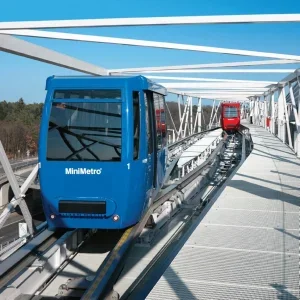The journey from the airport entrance to the departure gate is rarely a calm one. Official obstacles abound. Bags must be dropped off, tickets scanned and passports opened under the flinty gaze of border control guards. Then, the mind games occur; an entirely self-inflicted ritual of paranoid rummaging through one’s own luggage to confirm the presence of every single travel essential. Much of this seems unavoidable, even inevitable given current concerns around airport security.
However, engineers at Rockwell Collins believe that recent breakthroughs in biometrics, self-bagdrop technology and cloud computing could transform what for many is a fraught experience into a process that is, for all intents and purposes, seamless.
“The passenger experience will change fundamentally over the next three to five years, perhaps even faster than that,” says Paul Hickox, the firm’s head of global airport sales. It will begin with the widespread implementation of self-bagdrop technology, which has already proved its worth in a contract Rockwell Collins recently took on to supply 100 such units at Dublin Airport.
“It’s really allowed Dublin to control and manage what were getting to be excessive queues during peak holiday season with its US connections,” explains Hickox. “It has also increased baggage throughput in the terminal. So, rather than building and expanding the infrastructure in the airport by putting bagdrop in place, you can put through up to three times more bags down the same belt than is possible with a traditional checking agent.”
Up in the clouds
Rockwell Collins is hoping to install similar units in airports across Europe, Asia and North America. The firm has also worked closely with its strategic partner, Atkins, to invest heavily in biometric technology in order to fully streamline the check-in process.
“It is now possible to generate facial biometrics with no development required from the airlines,” says Hickox, thereby eliminating the need for human staff to sit in booths waiting to check passenger documentation. “Your face becomes your boarding pass and passport for the remainder of your journey.”
These developments are complemented by Rockwell Collins’ broad focus on the potential of cloud computing. For over 30 years, the firm has been using the company’s ARINC multiuser system environment technology to enable airlines to check in passengers from any desk in a client airport. Recently, Rockwell Collins updated the platform by moving it to the cloud. Now known as ARINC cMuse, the software can be run remotely, allowing it to be used by any airport that lacks the financial flexibility to invest in large, on-site data centres.
“Smaller airports that have four to eight check-in desks, and a couple of flights coming in and out each day didn’t have the capital to invest in these types of technologies,” explains Hickox. “By having them in the cloud, those airports can provide a top-grade service by checking in any airline passenger directly on to the airline reservation system and allowing much greater access to information about the passenger’s journey.”
Beyond check-in
This is not to say that Rockwell Collins’ involvement in cloud computing stops at streamlining the check-in process. “Other products and services will be migrated into the cloud to allow airports to save money on their data systems by accessing them directly in the cloud,” says Hickox.
A number of international airports are now vying to be the first Rockwell Collins client to install ARINC cMuse. The firm is also able to cater for any airports located in countries that require passenger data to be stored securely within their own borders, by supplying a private cloud. “A mini-cloud can be created inside the airport, which will be unique in the industry in terms of providing on-premises cloud technology,” says Hickox.






